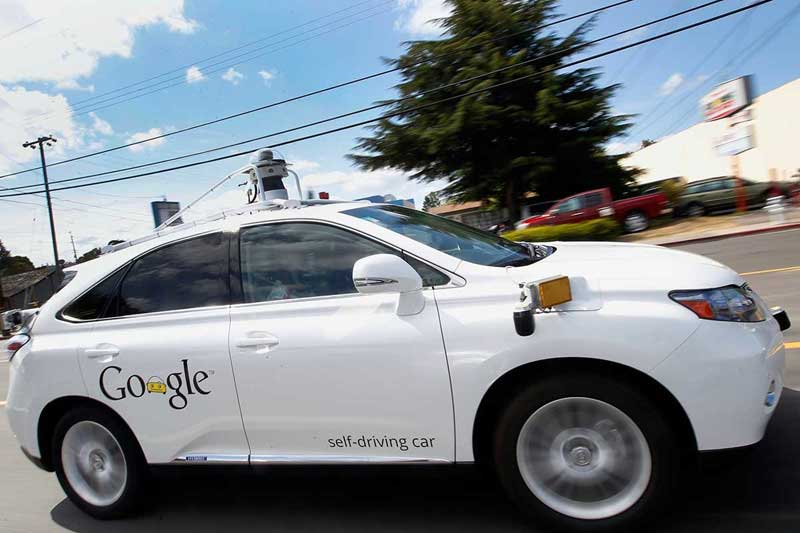Driverless cars are, without a doubt, the future of mobility. They will help us unlock potential in the auto as well as transportation industries.
Of course, artificial intelligence (AI) has been tested in other industries and has shown great potential in making the world a better, more functional place and because autonomous vehicles are built on AI, we can predict that there will be fewer cases of car collisions and car accidents in the future.
As a matter of fact, car manufacturers and sellers will improve their car warranty policies to accommodate these new changes. There is a likelihood of prolonged warranties and cheaper insurance policies as our roads get safer.
But a driverless future will present a new set of risks, most notably cybersecurity threats. Hackers can, for example, hack into a car and crash it, carjack it, or cause unnecessary traffic jams on our roads.
Also, there is the risk of data thieves gaining access to the data stored in the databases of shared vehicles and then using that data to terrorize innocent road users. They can easily tell where a given road user went, the purpose of the user’s trip, and when he got home. He can use that data to build a case against him, which they can then use to demand a ransom.
In a nutshell, connected and increasingly autonomous vehicles present as many negative concerns as the positive gains. What, then, is the way forward? Well, a comprehensive approach to cybersecurity must be forged going forward if we are to have a secure ecosystem of autonomous cars, smart cities, and smart roads. To put this concept into perspective, let’s discuss three risks that make cybersecurity vital for a driverless future.
1. Ridesharing and car-sharing risks
Car-sharing and ridesharing, better known as shared mobility, is on the rise. It has helped people who don’t own cars to achieve convenient mobility at an affordable cost. But there have been many challenges to this trend, particularly the increasing cases of ridesharing apps getting attacked by malware that steals data from unsuspecting users. As vehicles move from being human-controlled to being autonomous, shared mobility will get bigger and the cybersecurity threats will most likely increase both in magnitude and complexity.
Today, a hacker can throw you off balance by simply hacking into your smartphone and redirecting your ride elsewhere. Now imagine what he can do if, instead of the phone, he got access to the software and database of the car itself. He can steal navigation and location information, copy riders’ credit and banking information, and tap into conversations that could be happening in the car. It would mean more trouble.
2. Carjacking possibilities
Autonomous cars are essentially huge and speedy mobile computers. They communicate with each other through device-to-device IoT technology, and because of their high speed, the communication must be fast and precise. This communication will be done via remote servers, meaning that huge amounts of data will be shared across servers and devices in real-time. The question, therefore, is: Will the networks through which this data will be shared be completely safe from hackers?
If the data is vulnerable, the possibilities of carjacking can be unimaginably high. A hacker can, for example, hack into a remote server and use it to control cars on the road. He can choose to instruct the car to brake suddenly, engage the accelerator, or turn unexpectedly. That could precipitate untold havoc. That is why serious data security measures must be put in place before all cars become autonomous. One such measure would be to buy a VPN. A virtual private network will successfully keep data thieves at bay.
3. The external sensors are vulnerable
Lastly, AVs will rely on multiple external sensors to identify and communicate with pedestrians. If the sensors are tampered with or blocked, a driverless car will not be able to find its path. On the flip side, the sensors can be fed with wrong information and get tricked into sensing nonexistent objects on the road, prompting it to engage emergency brakes. Either way, that can result in fatal accidents.
In conclusion
Car manufacturers and their tech partners must put a lot of emphasis on digital security before launching their autonomous vehicles. Of course, the threats associated with AVs are new, so it will be naïve to imagine that the security systems will be 100% perfect. What matters is that the glaring flaws in the execution of the Internet of Things (IoT) devices be corrected, and then timely software updates are made in order to stay a step ahead of data thieves.
About Author
As a child, Ariana Merill loved to figure out how cars worked, and this has translated into his love and passion for Mechanical Engineering. For the past twelve years, Ariana has been helping communities thrive through careful monitoring and innovation of electrical and mechanical systems.














Comments
2 responses
This is so insightful.
When you mix correct facts and incorrect opinions, your article will end up misleading and miseducating readers. Please research thoroughly before writing such pieces.
Autonomous cars do not communicate with each other, otherwise they’d cease to be autonomous. They may relay information to a central control centre, but that’s pretty much it. The most that can be done to the car, from that centre, is to halt a rogue vehicle and switch off its engine.
Remote controlling cars is a flaw in the onboard computers of existing cars, human driven and autonomously driven. It has absolutely nothing to do with the autonomous software controlling the car. Bad actors can cause accidents, right now, with the existing cars we drive, does that mean we should stop driving? If your answer in NO, then the driverlessness of the car holds no relevance.
A VPN protects traffic enroute, it doesn’t prevent the carrying of malicious traffic. If the system has been compromised, malicious traffic and instructions can still be sent over that VPN.
Don’t panic over tech. As long as the benefits of an innovation supersede it’s risks, the innovation will thrive.